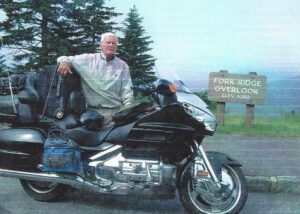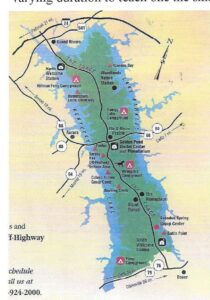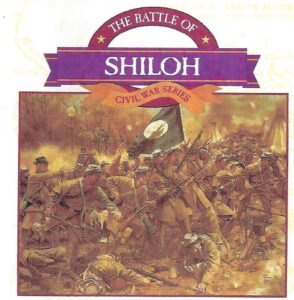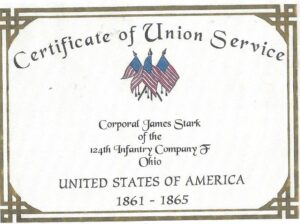“Rosie” is the name of my motorcycle. That’s really a nickname because the full name was: Rocinante” the name of Don Quixote’s horse—of Man from La Mancha fame. I had five motorcycles over the years, and the “Rosie” christening didn’t actually occur until my second to last Honda Goldwing.
Sometimes while spending hours in the saddle covering the miles, I would compose poetically. On one trip, Rosie became the poem’s subject and I blamed it on my wanderlust.
The first stanza went something like this—well, exactly like this:
Rosie made me do it, its teeth were on the bit,
“Come on now ol’ timer, let’s do another trip.”
Rosie is my companion, a two-wheeled brave crusader,
Honda never made a Wing, more staunch or ever braver.
So, with that as my excuse I took extended motorcycling trips beginning in 1984 covering hundreds of thousands of miles. My last Goldwing had 70,000 miles on its odometer. My initial travels included my youngest son, Brian, as a back seat passenger. Those were spring break rides always to the south seeking sun and fun. Later my excursions were all solo, hauling camping gear, and spending evenings in campgrounds with a tent for shelter.
I explained those solo rides by saying I was always in search of stories to discover. If something interesting flashed by at 70 miles per hour, I needed to stop, go back, and investigate. You can’t do that when riding with companions.
My travels included several rides out west to the Rocky Mountain states, but also north into Canada and offshore to Nova Scotia. Southeast was also explored during those two and three-week journeys.
I ended each day by scouting out a campsite and going through the process of unloading 200 pounds of gear, setting up the shelter, and assembling my cooking utensils. Surprising as it may seem, I thoroughly enjoyed those tasks. Later, relaxing by the campfire with computer in lap recording the day’s discoveries was considered as good as it got.
I’m hesitant to name a favorite trip because all were enjoyable in some way, but a particularly memorable one occurred in 2005. One of my missions on that excursion was to visit the Civil War battlefields of Shiloh, Sones River, Chickamauga, and Petersburg. A special inclusion on that adventure was my plan to enroll in a week-long hang-gliding school at Lookout Mountain, Georgia.
I departed my home in Bloomington, IN, on June 27. Unlike my other trips to mountainous elevations or cooler northern climes, temperatures in the Midwest were in the 90s with equally high humidity. I routinely try for heavy mileage on my first day of those trips just to get on my way. However, on this trip spending nine hours in the saddle covering 450 miles in roasting conditions was not fun.

My initial route southeast took me down the Trace, a road in the center of the Land Between the Lakes, a peninsula between Lake Barkley and Kentucky Lake. My mistake was not taking advantage of the numerous campgrounds along that route and calling it quits early, but I pushed on to the southern border of Tennessee.

Arriving that night at a state park was a welcome relief. The evening tasks I used to enjoy were hastily accomplished and I finally surrendered to the heat and crawled onto my sleeping pad. That root pressing into my back didn’t stand a chance of keeping me awake.
Breaking camp early, I was one of the early arrivals to tour the Shiloh National Military Park. The Shiloh battle was significant for a couple reasons. It was the earliest and western most battle of the war. The horror of that two-day battle resembled Armageddon. The inexperienced soldiers on both sides, confused by poor communication, fought with frenzy and violent hysteria. It was said those who died at Shiloh surely went to Heaven because all had spent their time in Hell.

One hundred ten thousand soldiers met in battle on April 6, 1862 at Shiloh. Union losses were 1,754 killed, 8,408 wounded, and 2,885 captured, for total losses of 13,047. Confederate casualties were 10,699, with 1,728 killed, 8,012 wounded, and 959 captured.
My next day’s tour included the Stones River Battlefield at Murfreesboro, Tennessee, fought on December 31, 1862. It gets the nod as being the deadliest battle of the Civil War. Total losses were nearly equal to Shiloh, 23,525 vs 23,746 except the Stone River casualties represented a third of the total men fighting. One of the famous clashes during the battle was known as the “Slaughter Pen.” The area was initially held by Federal troops. During the first day the Rebels were firing canons into the Yankee ranks point blank and drove them out of the area. The Confederates assumed they had won the skirmish. However, overnight the Feds reorganized, and counter attacked the next day. Twenty-five percent of the deaths at Stone River occurred in the Slaughter Pen.

Next stop on my itinerary was Chattanooga, location of the Chickamauga Battlefield. However en route I would pass through Lynchburg, home of the Jack Daniels Distillery. Friends told me a visit there was worthwhile, so why not.
My friends were right. It was an interesting tour. Jack Daniels bourbon get its smooth taste from being filtered through hardwood charcoal. Following the filtration, it is then aged for four years in oak barrels. Other than its most popular brand, “Old No.7”, it also had a premium brand called “Single Barrel.” If you become a member of the Single Barrel Society, you can order the product in a custom made 55-gallon barrel with a brass name plate bearing your name. One of the barrels getting ready for shipment bore the name “Big Red Liquors, Bloomington, Indiana.” Next time I see Mark McAlister, owner of Big Red, I need to mention seeing his barrel.
My special interest in the Chickamauga Battlefield related to the death of a soldier by the name of Corporal James Stark, my great, great uncle, brother of my great, great grandfather, Henry Stark. James was killed on September 19, 1863. I have his military records including his wife’s claim for survivor benefits. He was a member of Company F of the 124th Regiment, Ohio Volunteers.

Arriving at the Chickamauga National Battlefield I was able to explain my interest in that particular soldier and by identifying his specific unit was given the three locations his company fought on the day he died. Each location was marked with a park monument. I assumed by standing by those monuments I would be able to sense the location where my great, great uncle fell. I’m not sure I felt that connection, but it was a moving experience nevertheless. Chickamauga was considered a defeat for the Union forces.
Next stop on my travels was the Lookout Mountain Glider School. The school’s headquarters is located at the top of Lookout Mountain. When I pulled up on Rosie, I could see flyers stepping off a concrete ramp and gliding down to a landing field 1,340 feet below. Gulp! Could I do that? Heck yes, I was a Hotel Sierra Navy Pilot, wasn’t I!
This blog is getting rather lengthy, so I think I’ll declare an intermission and continue the story in the next posting.
Until next time,
Jim
Very interesting Jim. Looking forward to the next chapter.
I too ride a motorcycle, but it has 3 wheels. I’m jealous of your long trips. I don’t think either I or my motorcycle (tricycle) could make it.
Jim, i will be waiting for the next addition, your glider experience. Again, interesting info from your travels aboard Rosie.